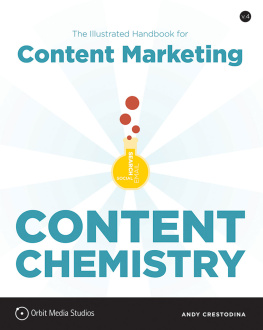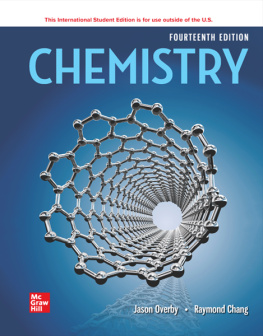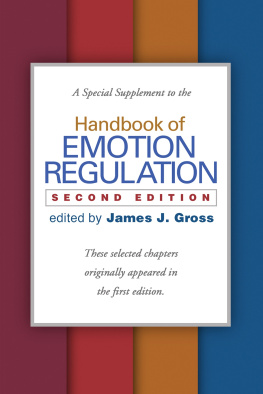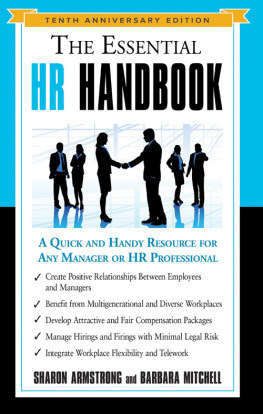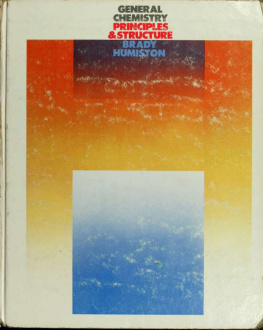James Speight - Langes Handbook of Chemistry, 70th Anniversary Edition
Here you can read online James Speight - Langes Handbook of Chemistry, 70th Anniversary Edition full text of the book (entire story) in english for free. Download pdf and epub, get meaning, cover and reviews about this ebook. year: 2005, publisher: McGraw-Hill Education, genre: Home and family. Description of the work, (preface) as well as reviews are available. Best literature library LitArk.com created for fans of good reading and offers a wide selection of genres:
Romance novel
Science fiction
Adventure
Detective
Science
History
Home and family
Prose
Art
Politics
Computer
Non-fiction
Religion
Business
Children
Humor
Choose a favorite category and find really read worthwhile books. Enjoy immersion in the world of imagination, feel the emotions of the characters or learn something new for yourself, make an fascinating discovery.

- Book:Langes Handbook of Chemistry, 70th Anniversary Edition
- Author:
- Publisher:McGraw-Hill Education
- Genre:
- Year:2005
- Rating:4 / 5
- Favourites:Add to favourites
- Your mark:
- 80
- 1
- 2
- 3
- 4
- 5
Langes Handbook of Chemistry, 70th Anniversary Edition: summary, description and annotation
We offer to read an annotation, description, summary or preface (depends on what the author of the book "Langes Handbook of Chemistry, 70th Anniversary Edition" wrote himself). If you haven't found the necessary information about the book — write in the comments, we will try to find it.
Langes Handbook of Chemistry, 70th Anniversary Edition — read online for free the complete book (whole text) full work
Below is the text of the book, divided by pages. System saving the place of the last page read, allows you to conveniently read the book "Langes Handbook of Chemistry, 70th Anniversary Edition" online for free, without having to search again every time where you left off. Put a bookmark, and you can go to the page where you finished reading at any time.
Font size:
Interval:
Bookmark:
LANGES HANDBOOK OF CHEMISTRY

 Copyright 2005, 1999, 1992, 1985, 1979, 1973, 1967, 1961, 1956 by The McGraw-Hill Companies, Inc. All rights reserved. Except as permitted under the United States Copyright Act of 1976, no part of this publication may be reproduced or distributed in any form or by any means, or stored in a database or retrieval system, without the prior written permission of the publisher. ISBN: 978-0-07-177683-7
Copyright 2005, 1999, 1992, 1985, 1979, 1973, 1967, 1961, 1956 by The McGraw-Hill Companies, Inc. All rights reserved. Except as permitted under the United States Copyright Act of 1976, no part of this publication may be reproduced or distributed in any form or by any means, or stored in a database or retrieval system, without the prior written permission of the publisher. ISBN: 978-0-07-177683-7MHID: 0-07-177683-4 The material in this eBook also appears in the print version of this title: ISBN: 978-0-07-143220-7, MHID: 0-07-143220-5. All trademarks are trademarks of their respective owners.
Rather than put a trademark symbol after every occurrence of a trademarked name, we use names in an editorial fashion only, and to the benefit of the trademark owner, with no intention of infringement of the trademark. Where such designations appear in this book, they have been printed with initial caps. McGraw-Hill eBooks are available at special quantity discounts to use as premiums and sales promotions, or for use in corporate training programs. To contact a representative please e-mail us at bulksales@mcgraw-hill.com. TERMS OF USE This is a copyrighted work and The McGraw-Hill Companies, Inc. (McGraw-Hill) and its licensors reserve all rights in and to the work.
Use of this work is subject to these terms. Except as permitted under the Copyright Act of 1976 and the right to store and retrieve one copy of the work, you may not decompile, disassemble, reverse engineer, reproduce, modify, create derivative works based upon, transmit, distribute, disseminate, sell, publish or sublicense the work or any part of it without McGraw-Hills prior consent. You may use the work for your own noncommercial and personal use; any other use of the work is strictly prohibited. Your right to use the work may be terminated if you fail to comply with these terms. THE WORK IS PROVIDED AS IS. McGRAW-HILL AND ITS LICENSORS MAKE NO GUARANTEES OR WARRANTIES AS TO THE ACCURACY, ADEQUACY OR COMPLETENESS OF OR RESULTS TO BE OBTAINED FROM USING THE WORK, INCLUDING ANY INFORMATION THAT CAN BE ACCESSED THROUGH THE WORK VIA HYPERLINK OR OTHERWISE, AND EXPRESSLY DISCLAIM ANY WARRANTY, EXPRESS OR IMPLIED, INCLUDING BUT NOT LIMITED TO IMPLIED WARRANTIES OF MERCHANTABILITY OR FITNESS FOR A PARTICULAR PURPOSE.
McGraw-Hill and its licensors do not warrant or guarantee that the functions contained in the work will meet your requirements or that its operation will be uninterrupted or error free. Neither McGraw-Hill nor its licensors shall be liable to you or anyone else for any inaccuracy, error or omission, regardless of cause, in the work or for any damages resulting therefrom. McGraw-Hill has no responsibility for the content of any information accessed through the work. Under no circumstances shall McGraw-Hill and/or its licensors be liable for any indirect, incidental, special, punitive, consequential or similar damages that result from the use of or inability to use the work, even if any of them has been advised of the possibility of such damages. This limitation of liability shall apply to any claim or cause whatsoever whether such claim or cause arises in contract, tort or otherwise.
Nevertheless, the Handbook remains the one-volume source of factual information for chemists and chemical engineers, both professionals and students. The aim of the Handbook remains to provide sufficient data to satisfy the general needs of the user without recourse to other reference sources. The many tables of numerical data that have been compiled, as well as additional tables, will provide the user with a valuable time-saver. The new format involves division of the Handbook into four major sections, instead of the 11 sections that were part of previous editions. , General Information and Conversion Tables, contains all of the general information and conversion tables that were previously found in different sections of the Handbook. In also contains expanded information relating to the names and properties of condensed polynuclear aromatic compounds.
Enthalpies and Gibbs Energies of Formation, Entropies, and Heat Capacities of Organic and Inorganic Compounds, and Heats of Melting, Vaporization, and Sublimation and Specific Heat at Various Temperatures, are also presented in for organic and inorganic compounds, as well as information on the critical properties (critical temperature, critical pressure, and critical volume). As in the previous edition, ), has been retained as it offers valuable information and procedures for laboratory methods. As stated in the prefaces of earlier editions, every effort has been made to select the most useful and reliable information and to record it with accuracy. It is hoped that users of this Handbook will continue to offer suggestions of material that might be included in, or even excluded from, future editions and call attention to errors. These communications should be directed to the editor through the publisher, McGraw-Hill. JAMES G.
SPEIGHT, PH.D. Laramie, Wyoming
The data for each organic compound include (where available) name, structural formula, formula weight, Beilstein reference (or if un- available, the entry to the Merck Index, 12th ed.), density, refractive index, melting point, boiling point, flash point, and solubility (citing numerical values if known) in water and various common organic solvents. Structural formulas either too complex or too ambiguous to be rendered as line formulas are grouped at the bottom of each facing double page on which the entries appear. Alternative names, as well as trivial names of long-standing usage, are listed in their respective alphabetical order at the bottom of each double page in the regular alphabetical sequence. Another feature that assists the user in locating a desired entry is the empirical formula index. on General Information, Conversion Tables, and Mathematics has had the table on general conversion factors thoroughly reworked. Similarly the material on Statistics in Chemical Analysis has had its contents more than doubled.
Descriptive properties for a basic group of inorganic compounds are compiled in , Properties of Atoms, Radicals, and Bonds, have been significantly enlarged. For example, the entries under Ionization Energy of Molecular and Radical Species now number 740 and have an additional column with the enthalpy of formation of the ions. Likewise, the table on Electron Affinities of the Elements, Molecules, and Radicals now contains about 225 entries. The Table of Nuclides has material on additional radionuclides, their radiations, and the neutron capture cross sections. Revised material for Section 5 includes the material on surface tension, viscosity, dielectric constant, and dipole moment for organic compounds. In order to include more data at several temperatures, the material has been divided into two separate tables.
Next pageFont size:
Interval:
Bookmark:
Similar books «Langes Handbook of Chemistry, 70th Anniversary Edition»
Look at similar books to Langes Handbook of Chemistry, 70th Anniversary Edition. We have selected literature similar in name and meaning in the hope of providing readers with more options to find new, interesting, not yet read works.
Discussion, reviews of the book Langes Handbook of Chemistry, 70th Anniversary Edition and just readers' own opinions. Leave your comments, write what you think about the work, its meaning or the main characters. Specify what exactly you liked and what you didn't like, and why you think so.

